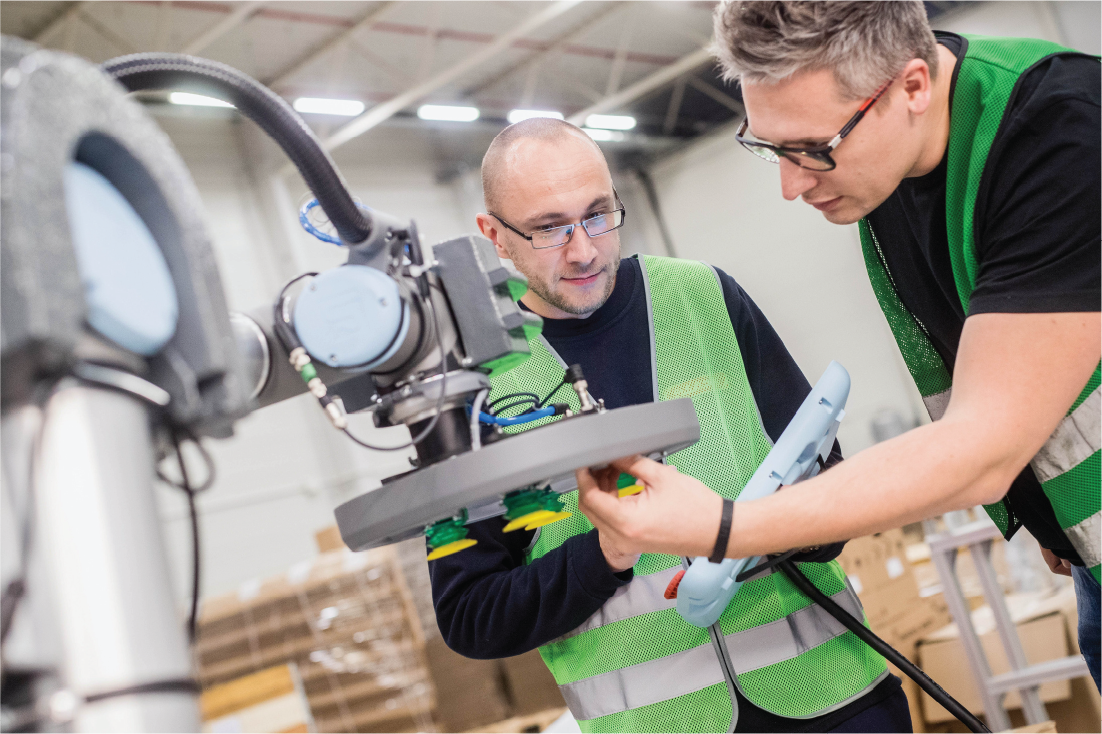Flexlink, a leader in manufacturing automation, needed a solution to create custom protective covers for robotic arms to meet safety standards in collaborative workspaces. Omni3D provided an innovative 3D printing approach to fulfill Flexlink’s needs. By integrating 3D printing, Flexlink was able to streamline the prototyping and production process, allowing for faster adjustments and reduced production costs. Omni3D was tasked with developing a cover that would meet precise dimensional and weight requirements while maintaining the durability needed for operational demands.
The Challenge
Flexlink engineering team was looking for a customizable solution, which would fit to several different robotic arms. The part needed to meet several stringent requirements:
- Impact resistance: The frame had to protect electronic components from potential damage.
- Heat tolerance: The material had to withstand the elevated temperatures generated by their robotic arms.
- Lightweight design: To minimize the load on the robot and optimize its performance.
- Customization: The component needed to fit the specific dimensions and contours of each robotic arm.

The Solution
Omni3D’s engineering and technical team collaborated closely with Flexlink to develop a tailored solution, leveraging our expertise in optimizing small-batch production with additive manufacturing solutions.
- Material Selection: After careful evaluation, the team selected ABS filament for its exceptional mechanical properties and resistance to chemicals and heat. ABS’s combination of strength and durability made it an ideal choice for the demanding environment of industrial robotics.
- Design Optimization: To ensure optimal performance, the cover was designed with a 25% infill density. This approach balanced the need for strength with the requirement for a lightweight component.
- Large-Format Printing: Given the size of each robotic cover, Omni3D utilized its OmniLITE large-format 3D printer. By printing the cover in a controlled environment with a chamber temperature of 50°C, the team was able to achieve precise dimensional accuracy and superior surface finish.
- Iterative Process: Throughout the development process, Omni3D and Flexlink worked closely together to refine the design and ensure that the final product met all specifications. This collaborative approach allowed for rapid prototyping and iterative improvements to final functional part.

A Long-Standing Partnership
The printed positioning frame successfully received positive evaluations, enabling Flexlink to reduce the costs of mold production and accelerate bpth decision-making and implementation processes. The success of this project led Flexlink to choose Omni3D printers for its individual production needs, opening the door to customized solutions and faster adaptations to user demands.
Throughout the years, Flexlink has repeatedly turned to Omni3D for customized 3D-printed components for their robotic arms. This ongoing collaboration proves the value of 3D printing in the robotics industry. By leveraging the flexibility and customization capabilities of additive manufacturing, Flexlink has been able to develop innovative solutions that meet the unique demands of their customers.
| Material | ABS |
| Print Time | 46 hours |
| Weight | 570 g |
| Dimensions | 610 x 372 x 34 mm |


